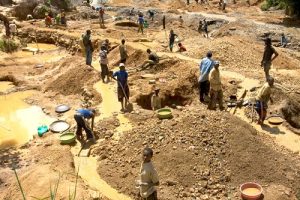
BY HENOK TIBEBU
Ethiopia has several National Parks that are home to different wild animals and bird species as well as beautiful landscapes with rich unique biodiversity. Since it is obviously mandatory to protect, preserve and develop the parks, the Ethiopian Widlife Conservation Authority (EWCA) with stakeholders, is intensifying for more effective work that intends on making the parks more attractive tourist destinations in the world.
A memorandum of understanding was also recently signed by EWCA and stakeholders from federal to Woreda levels. If such initiatives are implemented in a well-integrated manner, it would be a significant development in Ethiopia’s National Parks that have been facing the danger of wildlife poaching, smuggling and accidents of wild fire.
Even if it has faced the danger of wild fire two years ago, the Bale National Park is one of the most fascinating and ultimate destination for hikers, wildlife watchers, culture and nature enthusiasts, bird watchers and more. It is located 400km southeast of Addis Ababa, in Bale Zone of Oromia State and it comprises of diverse landscapes; the richest area endowed with endemic fauna and flora.
Documents indicate that until the beginning of this century, the Bale Mountains remained virtually unknown to European explorers and scientists. The first recorded visit was made by the German naturalist and explorer Carlo von Erlanger between 1899 and 1901. In the 1950s, the Finish geographer, Helmer Smeds, made three journeys to Bale and travelled from Goba through Rira to Delo-Mena and wrote an account of the altitudes, weather, early glaciations, vegetation and local pastoralism.
And the British botanist Herbet Mooney, the main initiator of the National Herbarium in Addis Ababa, visited the Sanetti Plateau and the Harenna Forest in 1958-1959 where he collected various plant specimens and made notes about the habitat.
O Hedberg’s research group, the first to move with a horse caravan across the central plateau, made observations about the vegetation belts and climatic conditions.
Meanwhile, a Belgian Dairy Farmer, B.N Weerts was given by Emperor Hailesilassie, a concession of 30 hectares of land around Dinsho and Gasay Grass land in 1960. For the fact that Weerts witnessed a very rich biodiversity around the area, he would report what he saw for the Emperor with a proposal that is considered as the major reason for the foundation of the Bale Mountains National a park.
Shortly thereafter, Leslie Brown made two journeys (in 1963 and 1965) to the Bale Mountains to investigate the status of the mountain nyala. Peace Corps volunteer Curtis Buer carried out the first organized survey of the area before it became a National Park. The Emperor also sent a research team led by Dr. Leslie Brown that traveled to the area two times and the park was officially opened In1969 with a temporary administration of the US Peace Corps.
Later the Derg regime prepared the general management plan of the park, that covers a total of 2165 Km² land. Based on the its natural resources and landscape it is comprised of three major vegetation zones.
The first one is the Gassay grass Land, which is stretched from Adaba Mountain to the northern part of the park headquarters, at Dinsho, according to EWCA. This breath taking landscape extends from one mountain range to another covered with endemic or endogenous plant specious and grasslands. The Gassay Grassland is a residence for the precious endemic Mountain Nyala, Minilik’s Bush Buck, as well as the common jackals, warthog, greyduiker, hyenas, claws, Abysinian catbird, and others.
The second The Bale Mountains National Park also covers the largest plateau area covering 1.7 percent of all the plateaus in Africa. It is a land inhibited by the largest number of Afro alpine as it patches 17 percent of Afro Alpine land in Africa.
According to EWCA the Afro alpine vegetation area of the park is the main habitat for endemic Ethiopian Wolves, Large Population of giant mole rat, bird species including steppe eagle, lanner falcon, pallid Harrier, bearded vulture, balck- headed siskin, blue winged goose, alpine chat and others. This is also an area suitable for migrant birds from Eurasia, and Africa to live in and breed in the winter.
The other section which is extended to the southern head-quarter of the Bale National Park is covered by the vast forest called the Harenna Forest. This zone covers an area of over 1000km² and it is the largest dense cloud forest and green zone throughout the year.
The Harrena forest contains massive girth plant species and is home for animals including the black and white Colobus monkey, the endemic Bale Monkey, lions, black- winged lovebird and the endemic yellow-Fronted parrot and numerous migrant birds species,
The National park is a habitat for more than 78 species of mammals 20 of which are endemic, over 300 bird species six of which are endemic to Ethiopia, including 1600 plant species, 160 of them are endemic and 32 of them are restricted to the Park,
Inspite of the fact that the Bale National Park is one of the richest parks in large numbers and species of fauna and flora, illegal settlements and grazing have been identified as major challenges affecting the park and the wildlife and plants of the park. Such settlements and illegal grazing, poaching are major issues that have been repeatedly mentioned as alarming factors in many parks of Ethiopia.
Thus EWCA and stakeholders as well as communities residing near by the National Parks have to commit themselves in protecting, preserving and developing the parks. After all, planet earth is meant for all combinations of life and every imbalance caused by mankind, has resulted excruciating damages to the world.
The Ethiopian Herald 9 February 2021





